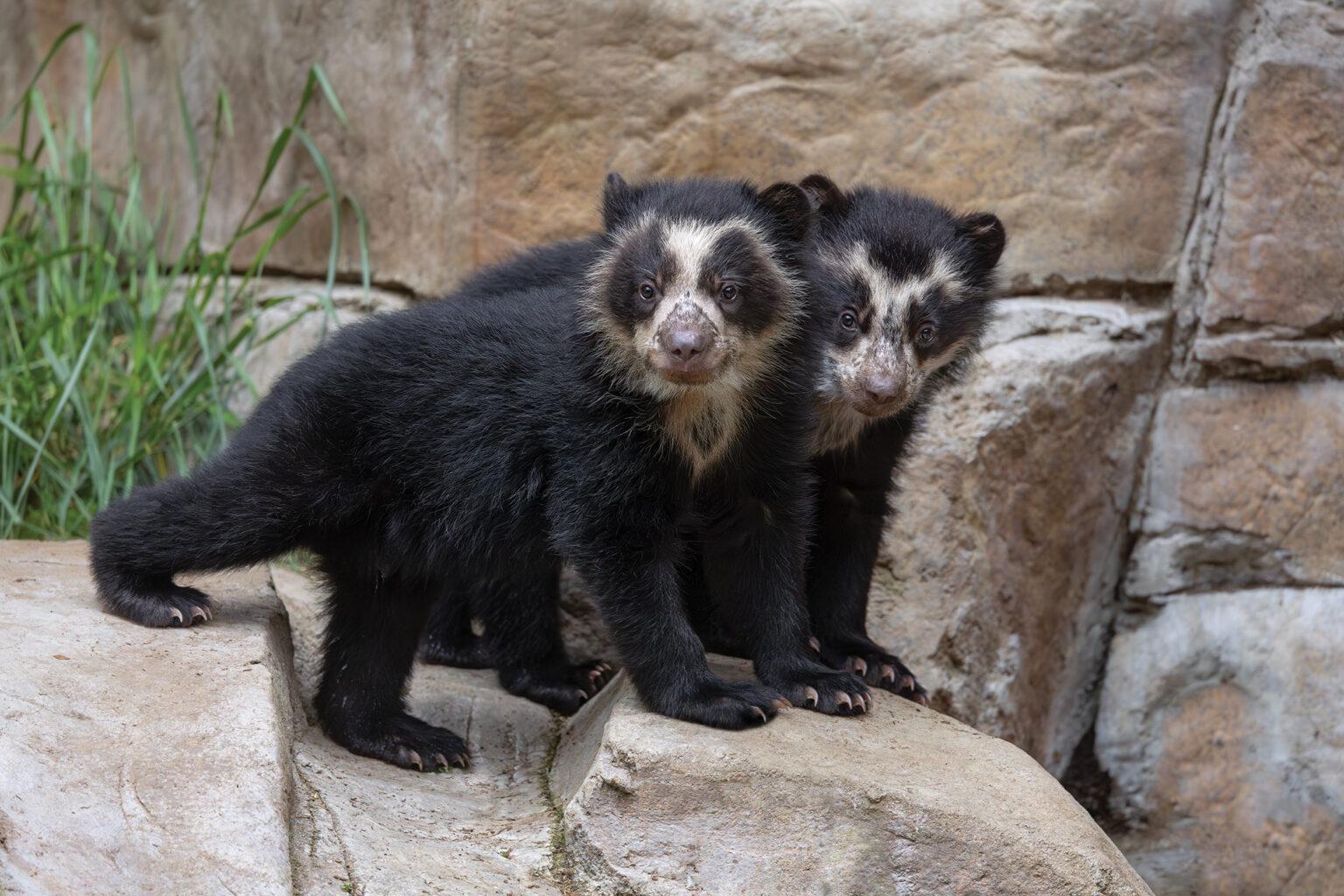
Alba Welcomes a Precious Pair
On December 10, 2022, two tiny Andean bear cubs—a male and a female—were born to 8-year-old sow (mom) Alba, and 12-year-old boar (dad) Turbo, at the San Diego Zoo. Since then, both cubs have grown by leaps and bounds, and they continue to hit important milestones.
The cubs were named in the Indigenous Quechua language, which is spoken in the South American countries of Colombia, Ecuador, Peru, Bolivia, and Argentina, where Andean bears live. The male cub is named Ransisku (pronounced ron-SIS-koo), the Quechuan form of “Francis,” and the female is Suyana (soo-YA-na), Quechuan for “hope.” Their names were chosen by Cathy Stiefel and Keith Behner, namesake donors for the Stiefel-Behner Research Program at Cocha Cashu Biological Station in San Diego Zoo Wildlife Alliance’s Amazonia Conservation Hub.
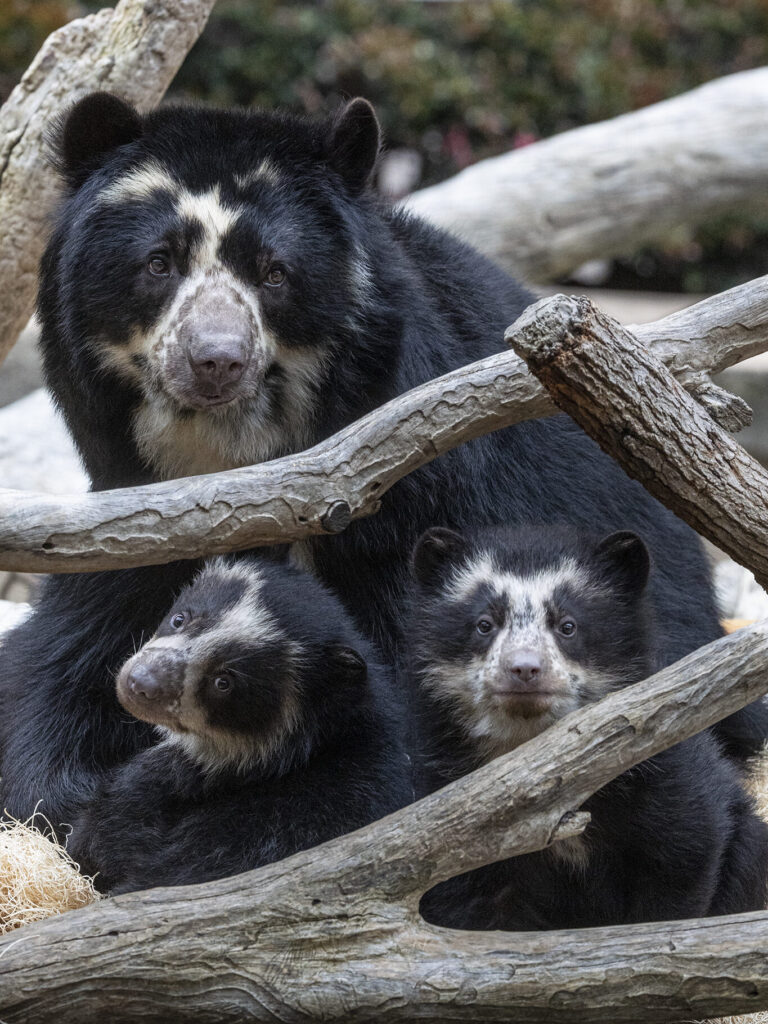
Not only is this an exciting time for wildlife care specialists and San Diego Zoo Wildlife Alliance, but it marks a significant addition for a vulnerable species. The only bear species in South America, Andean bears Tremarctos ornatus can be found along the Andes mountain range. They are also called spectacled bears, for the light-colored fur that typically appears as rings around their eyes, resembling glasses or “spectacles.” They are a true arboreal species, and build elaborate nests and platforms in trees to feed from and sleep in. There are only about 2,000 Andean bears left in their native habitats, which is why our two new additions are so significant.
Quite a Bear Pair
The journey of our Andean bear cubs began all the way back in spring of 2022. Andean bears are solitary, only coming together to breed or if a mother is raising cubs. Beginning in April, our wildlife care team began noticing subtle behavioral changes in both Turbo and Alba, indicating to us they were ready to interact. These changes included vocalizations, as Andean bears make a “cooing” noise, which can be a friendly greeting toward one another. Another indication that the bears were ready? They started building their nests near the door that connects the two habitats.
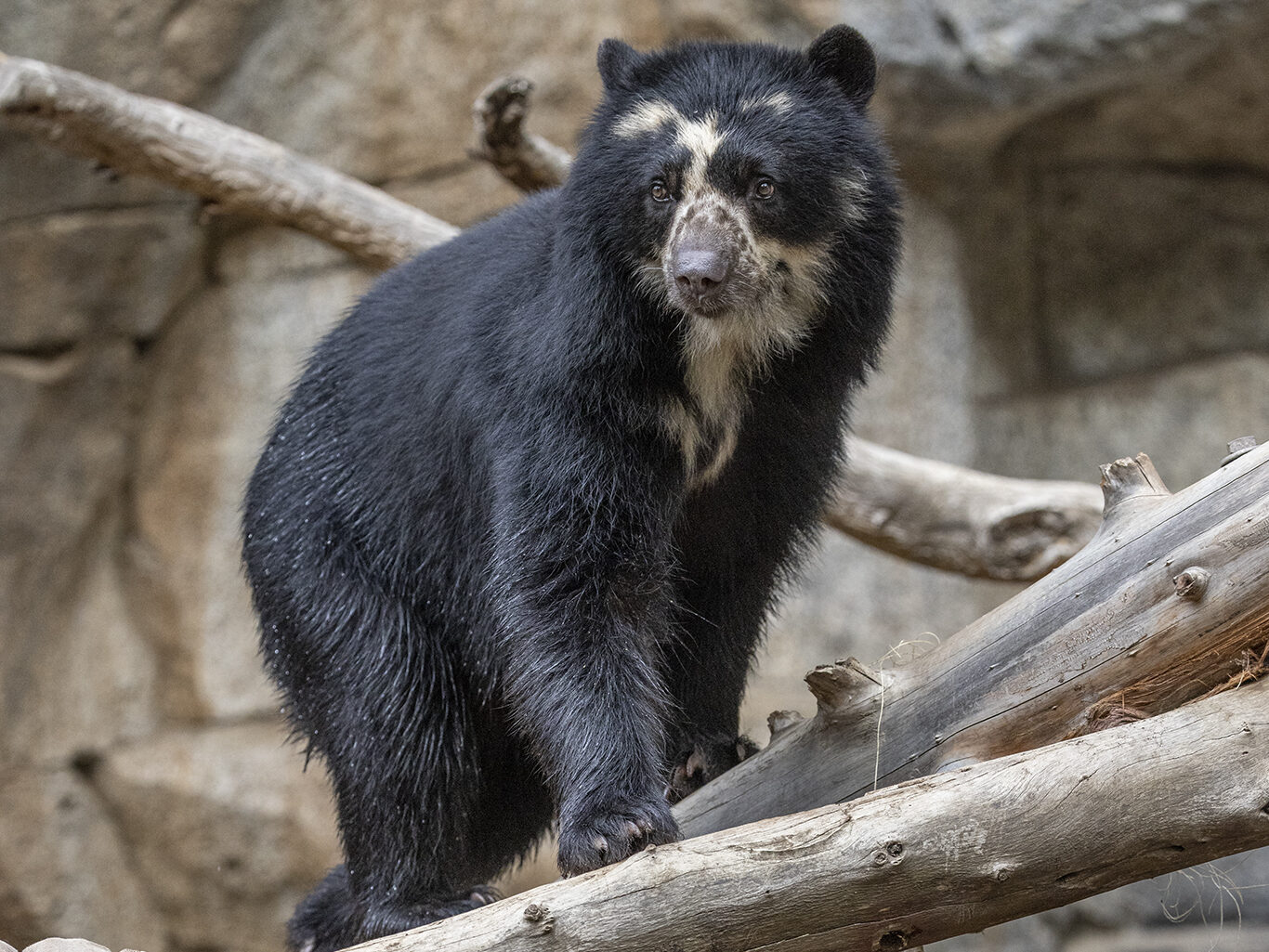
While this pair has been introduced successfully multiple times before, the speed at which the introduction progresses is up to Alba. Before the bears shared a physical space, we began by offering them the opportunity to interact nose to nose, with a door in between. We closely observed these interactions, and once Alba showed positive signs toward Turbo, we knew they were ready to take their relationship to the next level.
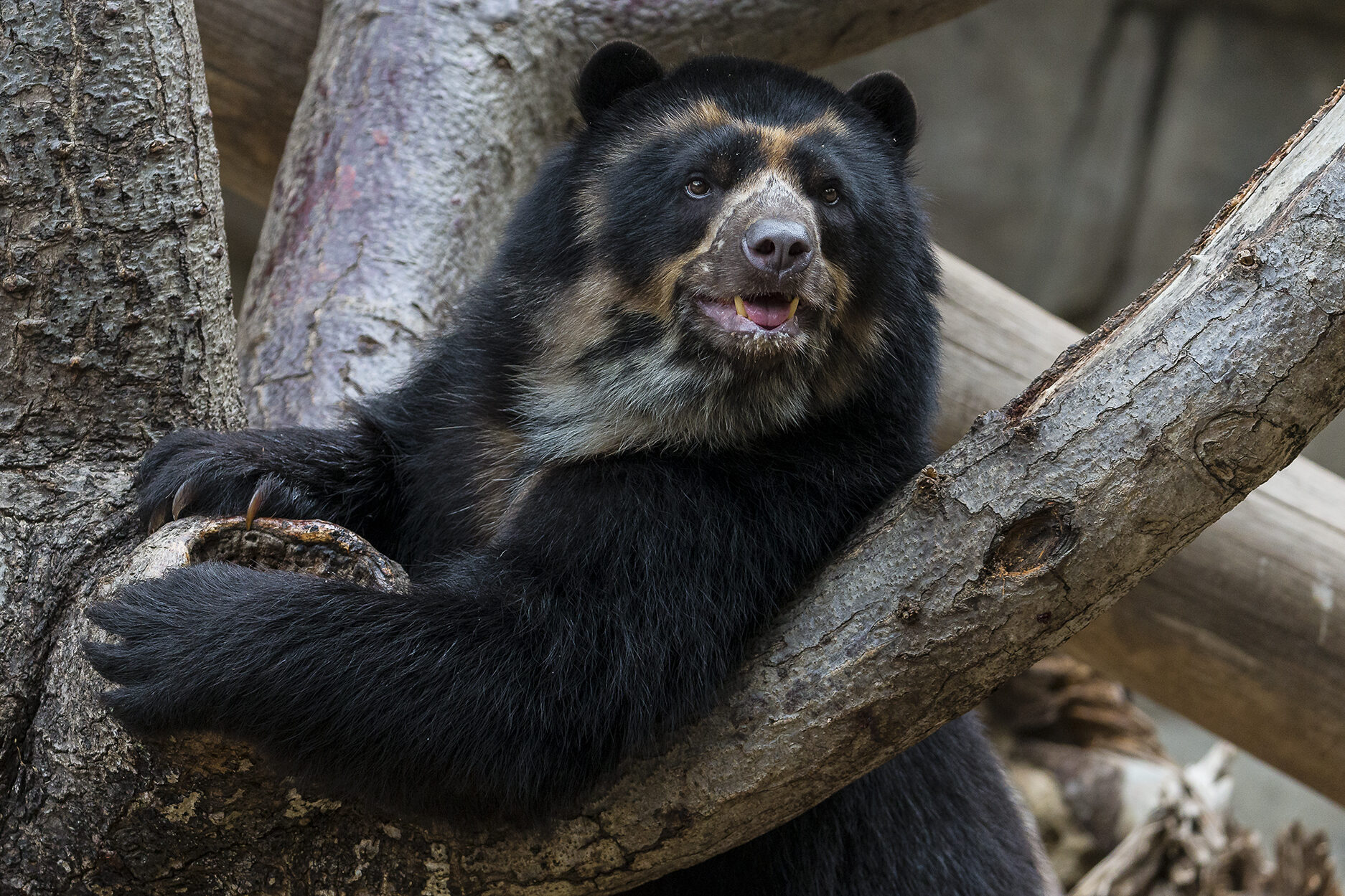
The bears moved into a shared habitat on May 10, and bred not long after. This is when the waiting game began, because while we knew exactly when Turbo and Alba bred, this species experiences delayed implantation—meaning that once the egg is fertilized, there is a prolonged and highly variable period between fertilization and the beginning of embryonic development. This is an adaptation to ensure the pregnancy will only progress when resources are abundant enough to support the growing cubs.
Establishing a Timeline
Based on the breeding we observed last spring, we assumed that implantation would occur sometime in the fall. To prepare, team members began reacquainting Alba with regular ultrasound examinations. For a previous pregnancy, Alba learned to sit and stay focused on a target smeared with avocado and peanut butter, while veterinarians offered an ultrasound. Starting in August, we once again began offering ultrasounds weekly. In mid-November, we saw the first evidence of pregnancy on ultrasound. First, we observed a single fetal heartbeat, but the next week, we confirmed two fetal heartbeats.
As the twins developed, veterinarians could monitor development of the cubs’ skeletons, hearts, and abdominal organs. Each week, they measured the developing fetuses. The team entered this information in the international Species Survival Plan database for Andean bear pregnancies, helping to create a database of growth milestones for Andean bear breeding programs around the world. The veterinary team had fetal measurements from Alba’s previous pregnancy, but—just as with human pregnancies— twins may be slightly smaller than a single offspring. Because she gave birth to a single cub last time, the twins’ due date relied on a best estimate.
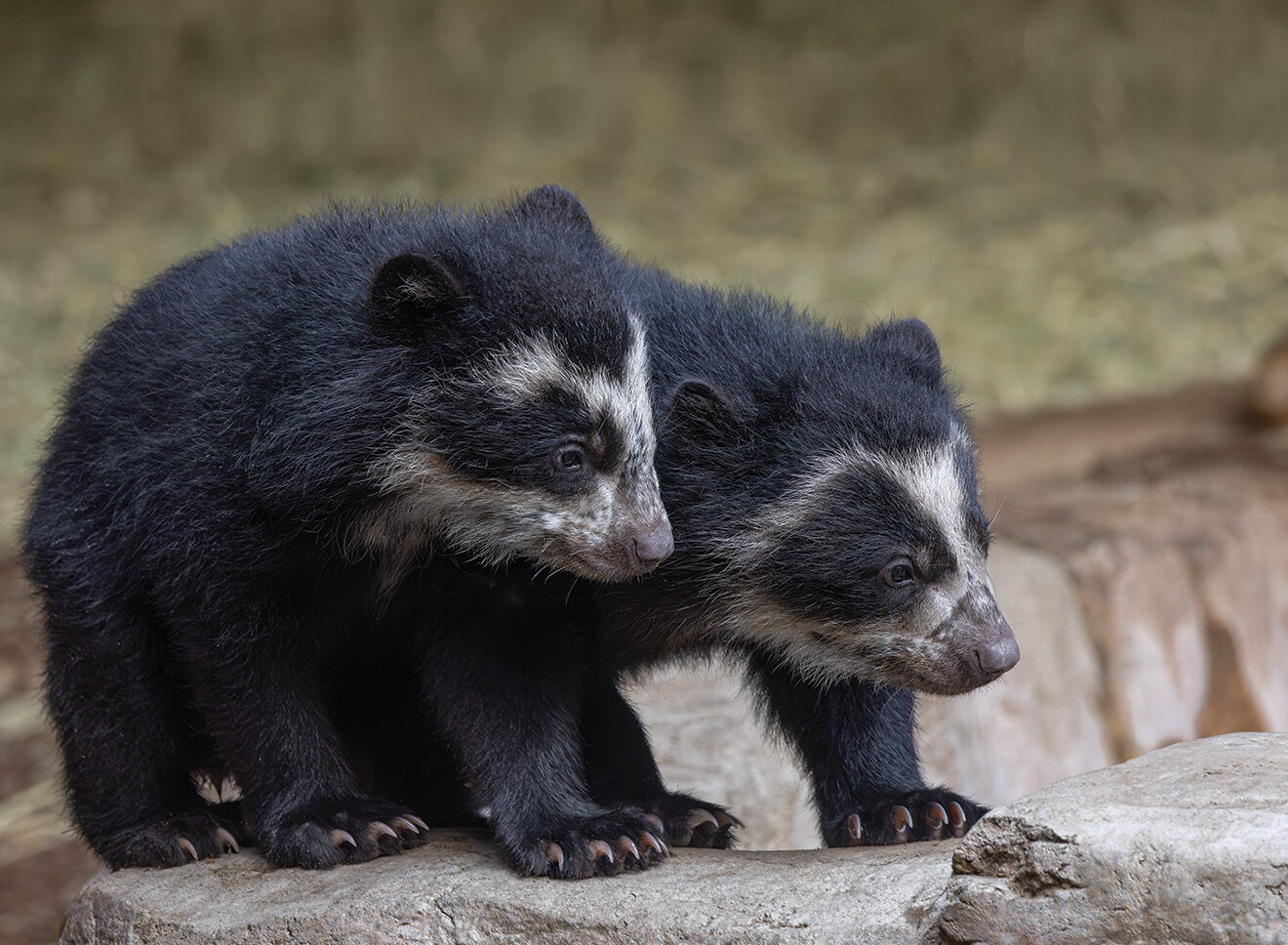
A couple of days before the cubs were born, Alba’s natural maternal instincts started to show. She began bringing a large amount of hay into her den, and her body began changing, which indicated to our team that birth was likely right around the corner. Sure enough, just a few days later, we heard—via a baby monitor—telltale joyful noises from the newborns. To give Alba as much privacy as possible, we observed her only via a camera in her den. Based on review of the footage, the first cub was born around 1:30 a.m., and the second was born sometime between 4:30 and 5 a.m. This is the second time Alba has given birth, and watching her natural maternal instincts with the cubs is always a beautiful and amazing experience.
Privacy, Please
Andean bear mothers are incredibly secretive, and Alba is no exception. She kept the cubs close, and they didn’t start to venture out of the den on their own until they were nearly three months old. But even when care specialists couldn’t directly observe developments, they were able to document the cubs’ critical milestones. Our team observed the cubs holding their heads up at around 37 days old, and their eyes opened at around 40 days old.
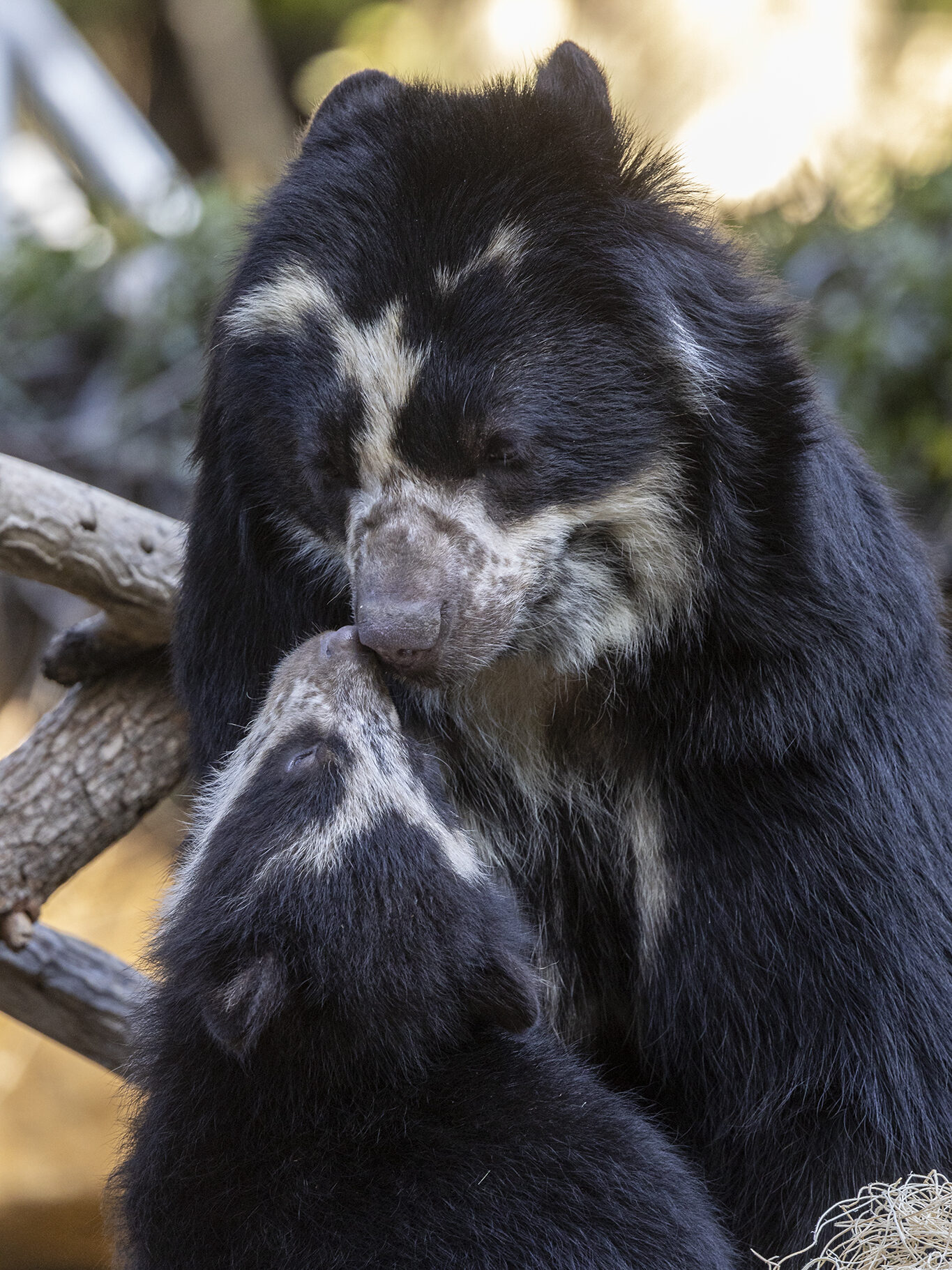
Our optimism continued to grow when the cubs began coming out of the den on their own, at around 75 days old. All these developmental milestones help us to better understand Andean bears in their native range. Studying Alba’s behavior in her den offers insight into nesting habits and preferences.
The excitement of the new Andean bear cubs continues, as cubs usually stay with their mother until they are around a year and a half old. We hope you’ll visit these incredible Andean bears for yourself, and enjoy all the fun antics that are happening daily in the Zoo’s Andean bear habitat!
Visit Ransisku and Suyana at the San Diego Zoo, and discover what your support makes possible for Andean bears through our Amazonia Conservation Hub.




